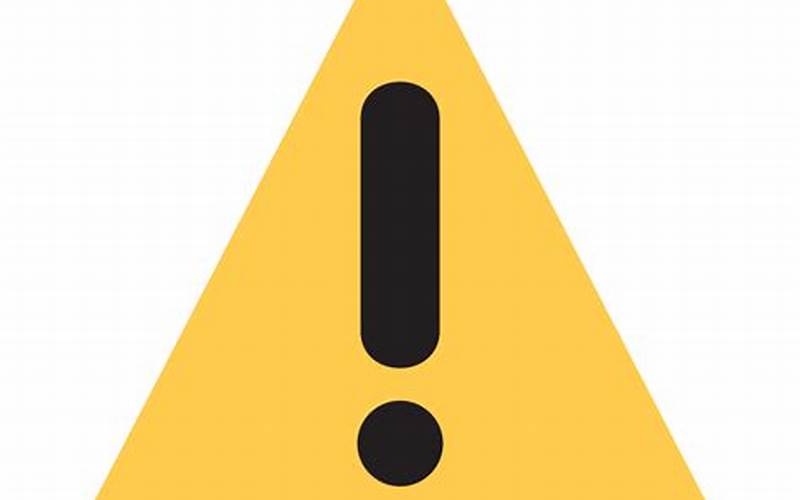Welcome to the World of Risk Management
Greetings, fellow business owners and executives! It is undeniable that running a call center business comes with a lot of risks. From data breaches to customer complaints, the list goes on and on. In today’s digital age, where information travels fast and customers are more discerning than ever, managing these risks is critical to your business’s success. This is why risk management in call centers is a topic that deserves your attention.
In this article, we will explore the ins and outs of risk management in call centers. We will cover everything from the basic definition of risk management to the specific steps you can take to mitigate risks in your business. We will provide you with a comprehensive guide to help you protect your business and your customers. So, let’s dive in!
 Source: bing.com
Source: bing.com
First things first, let’s define what risk management is. Risk management is the process of identifying, assessing, and controlling risks that may affect your business’s objectives. It involves evaluating the probability and potential impact of risks, and taking measures to avoid or minimize them. The ultimate goal of risk management is to safeguard your business’s resources, reputation, and profitability.
In the context of call centers, risk management is particularly important because of the nature of the business. Call centers deal with a high volume of customer interactions, which means they are exposed to a wide range of risks. These risks include:
| Type of Risk | Description |
|---|---|
| Data Security Risk | Risk of data breach or loss of confidential information |
| Compliance Risk | Risk of non-compliance with regulations and policies |
| Reputational Risk | Risk of damage to the brand’s reputation due to poor customer service or negative publicity |
| Operational Risk | Risk of disruption or failure of call center operations |
| Financial Risk | Risk of financial loss due to fraud or other financial crimes |
 Source: bing.com
Source: bing.com
The first step in risk management is to identify and assess the risks that your call center is exposed to. This involves conducting a comprehensive risk assessment to evaluate the likelihood and potential impact of each risk. A risk assessment typically involves the following steps:
Step 1: Identify the risks
Start by listing all the possible risks that your call center may encounter. This can include risks related to your technology, operations, workforce, customer service, and more. Be as exhaustive as possible to ensure that you don’t miss any potential risks.
Step 2: Assess the likelihood of each risk
Once you have identified the risks, evaluate how likely each risk is to occur. This will help you prioritize which risks to focus on first. Use a scale of 1 to 5 (with 1 being the least likely and 5 being the most likely) to rate each risk’s likelihood.
Step 3: Assess the potential impact of each risk
Next, evaluate the potential impact of each risk on your call center’s objectives. This can include financial loss, damage to reputation, loss of customers, and more. Use a scale of 1 to 5 (with 1 being the least impactful and 5 being the most impactful) to rate each risk’s potential impact.
Step 4: Calculate the risk level
After assessing the likelihood and potential impact of each risk, calculate the risk level for each risk. This is typically done by multiplying the likelihood and potential impact scores for each risk. Risks with higher scores are considered higher priority and should be addressed first.
Step 5: Develop a risk management plan
Based on your risk assessment, develop a risk management plan that outlines the specific actions you will take to mitigate each risk. This could include implementing security measures, updating policies and procedures, training employees, and more.
 Source: bing.com
Source: bing.com
Now that you have identified and assessed the risks in your call center, it’s time to take action to mitigate them. Here are some specific measures you can take to reduce the risks in your call center:
1. Implement data security measures
Call centers deal with a lot of sensitive customer information, such as names, addresses, and credit card numbers. Implementing robust data security measures, such as firewalls, encryption, and access controls, can help prevent data breaches and protect your customers’ privacy.
2. Ensure compliance with regulations and policies
Call centers are subject to various regulations, such as the Telephone Consumer Protection Act (TCPA) and the Payment Card Industry Data Security Standard (PCI DSS). Ensure that your call center is fully compliant with these regulations and has policies and procedures in place to ensure ongoing compliance.
3. Train employees on best practices
Invest in employee training to ensure that your staff understands the risks involved in call center operations and knows how to follow best practices. This can include training on data security, compliance, customer service, and more.
4. Monitor call center operations
Implement monitoring tools, such as call recording and quality assurance software, to keep an eye on your call center’s operations. This can help you identify potential issues early and take proactive measures to mitigate them.
5. Develop a crisis management plan
Prepare for the worst-case scenario by developing a crisis management plan that outlines the specific steps your call center will take in the event of a crisis, such as a data breach or a natural disaster. This will help you respond quickly and effectively, minimizing the impact of the crisis on your business and customers.
 Source: bing.com
Source: bing.com
 Source: bing.com
Source: bing.com
Risk management is the process of identifying, assessing, and controlling risks that may affect your business’s objectives. It involves evaluating the probability and potential impact of risks, and taking measures to avoid or minimize them.
 Source: bing.com
Source: bing.com
Risk management is particularly important in call centers because of the nature of the business. Call centers deal with a high volume of customer interactions, which means they are exposed to a wide range of risks, including data security risk, compliance risk, reputational risk, operational risk, and financial risk. Effective risk management can help protect your business and your customers.
 Source: bing.com
Source: bing.com
To identify and assess risks in your call center, conduct a comprehensive risk assessment that involves listing all possible risks, evaluating the likelihood and potential impact of each risk, and calculating the risk level for each risk. This will help you prioritize which risks to focus on first.
 Source: bing.com
Source: bing.com
To mitigate risks in your call center, implement data security measures, ensure compliance with regulations and policies, train employees on best practices, monitor call center operations, and develop a crisis management plan. These measures can help reduce the likelihood and potential impact of risks in your call center.
 Source: bing.com
Source: bing.com
Some common risks in call centers include data security risk, compliance risk, reputational risk, operational risk, and financial risk. Call centers are also vulnerable to risks related to technology, workforce, and customer service.
 Source: bing.com
Source: bing.com
To ensure ongoing compliance with regulations in your call center, stay up-to-date with the latest regulations and industry best practices, establish policies and procedures that reflect these regulations and practices, and train employees on compliance requirements.
 Source: bing.com
Source: bing.com
A crisis management plan for your call center should include a clear chain of command, communication protocols, backup plans for critical operations, and procedures for addressing specific types of crises, such as data breaches or natural disasters.
 Source: bing.com
Source: bing.com
You should review and update your call center’s risk management plan regularly, at least once a year, to ensure that it reflects changes in your business environment, regulatory landscape, and industry best practices.
 Source: bing.com
Source: bing.com
Some common misconceptions about risk management in call centers include the belief that it is too complex and time-consuming, that it is only necessary for large call centers, and that it is only about compliance. In fact, risk management is a critical component of call center operations that can help businesses of all sizes protect their resources, reputation, and profitability.
 Source: bing.com
Source: bing.com
Effective risk management can help your call center improve customer service by reducing the likelihood of service disruptions, ensuring compliance with regulations and policies, and protecting customer data privacy. This can help build trust and loyalty among your customers and improve your business’s reputation.
 Source: bing.com
Source: bing.com
Yes, outsourcing your call center operations can affect your risk management strategies. When you outsource, you may be delegating some of the risk management responsibilities to the vendor, so it’s important to ensure that your vendor has robust risk management policies and procedures in place. You should also establish clear communication channels with your vendor to ensure that you are informed of any potential risks and how they are being addressed.
 Source: bing.com
Source: bing.com
You can measure the effectiveness of your call center’s risk management strategies by monitoring key performance indicators (KPIs) related to risk management, such as the number and severity of incidents, the compliance rate, and customer satisfaction ratings. Regularly reviewing and analyzing these KPIs can help you identify areas for improvement and adjust your risk management strategies accordingly.
 Source: bing.com
Source: bing.com
Some emerging risks in call centers include cyber attacks, social engineering scams, and emerging technologies such as artificial intelligence (AI) and the Internet of Things (IoT). Staying informed about these emerging risks and implementing measures to mitigate them can help you stay ahead of the curve and protect your business.
 Source: bing.com
Source: bing.com
Thank you for joining us on this journey to explore risk management in call centers. We hope that you have gained a better understanding of this critical topic and the specific steps you can take to protect your business and your customers. Remember, risk management is not a one-time task. It is an ongoing process that requires constant vigilance and adaptation. By implementing the measures we have outlined in this article, you can reduce the impact of risks in your call center and ensure long-term success.
 Source: bing.com
Source: bing.com
Don’t wait until it’s too late to start managing risks in your call center. Start by conducting a comprehensive risk assessment, and develop a risk management plan that reflects the specific risks and needs of your business. Invest in data security measures, compliance training, and employee training on best practices. And remember to review and update your risk management plan regularly to ensure ongoing effectiveness.
 Source: bing.com
Source: bing.com
The information provided in this article is for educational and informational purposes only and is not intended as legal, financial, or professional advice. You should consult with your own advisors before taking any action based on the information provided in this article. We make no representations or warranties of any kind, express or implied, about the completeness, accuracy, reliability, suitability or availability with respect to the article or the information, products, services, or related graphics contained in the article for any purpose. Any reliance you place on such information is therefore strictly at your own risk.